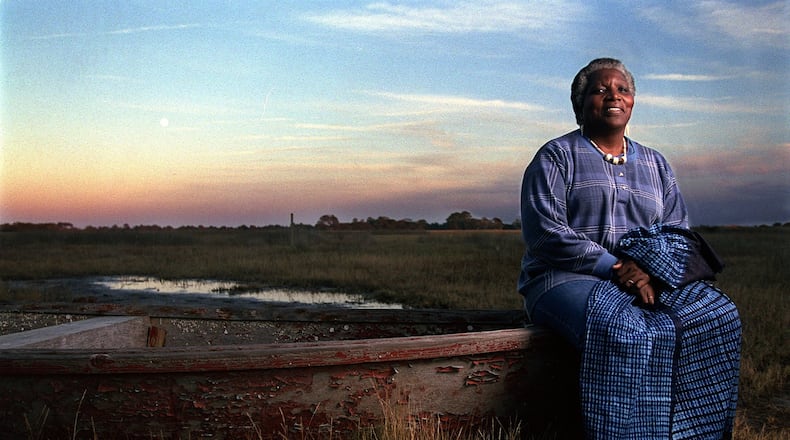Cornelia Walker Bailey was as much a part of Sapelo Island and the historic Hog Hammock community as the long and narrow seagrass and the saltwater that beats against the shores.
Bailey, who was proudly Geechee — a traditional African American lowcountry culture with its roots in the deep past — wore many hats. She was an author, unofficial historian, prominent community leader and keeper of the Georgia barrier island’s rich heritage. She died Sunday at age 72.
Her husband Julius Bailey confirmed her death, but declined to comment further.
According to Georgia Encyclopedia.org., she was born on Sapelo on June 12, 1945, to Hettie Bryant and Hicks Walker. She was one of among the last generation of African Americans to be born, raised and educated on Sapelo Island.
Many families and younger people moved to the mainland for better opportunities.
In 2000, Bailey published her memoir, “God, Dr. Buzzard, and the Bolito Man: A Saltwater Geechee Talks About Life on Sapelo Island, Georgia,” that detailed her life on the island, which is only accessible by boat. She also co-authored “A Geechee Homecoming” and “The Foods of Georgia’s Barrier Islands: A Gourmet Guide of Native American, Geechee and European Influences on the Golden Isles.”
The Baileys operated The Wallow, a guest house in historic Hog Hammock.
She once wrote that life on Sapelo “goes on much as it does anywhere else, but if you get to really see and feel what’s here, you will see the difference. The proud face as well as the angry walk, the easy smile as well as well as the hard frown, the easy life as well as the hardship, it’s all there reflected in the faces and stature of each individual.”
Melissa Cooper, author of “Making Gullah: A History of Sapelo Islanders, Race, and the American Imagination,” has known Bailey all her life.
She spent many summers on Sapelo Island, where Cooper’s mother was born. Most of the island is owned by the state of Georgia.
As she grew older, Cooper, an assistant professor of history at Rutgers University-Newark, began to “appreciate who she was as a community leader. She was instrumental in making all of us more aware of both the history of black Sapelo and the fight that islanders faced in terms of holding onto their land inheritance.”
Cooper said Bailey encouraged families with ties to the barrier island always return to Sapelo and stay engaged in the community. “She was both – in word and deed – an advocate for Sapelo’s people, Sapelo’s history and Sapelo’s future.”
Carletha Sullivan, a friend of Bailey’s and a member of the McIntosh County Shouters, which travels around the nation performing the traditional ring shout, which is a capella singing and dance.
One of her strengths was as a storyteller, said Sullivan, who lives in the small community of Bolden/Briar Patch.
“Oh, so many stories,” she said. “She was a great storyteller. She really was. “
You can see a slide show of photos from Bailey’s home on the Georgia sea islands here.
Bailey, she said “also fought tirelessly to keep them from developing the island so that she could save the Gullah/Geechee culture. She worked to keep the Hog Hammock community together.” While it bothered her that so many young people had left, Bailey recognized that “there was nothing on the island for younger people to do. She understood.”
Perhaps, though, the best to know Bailey and her beloved island is through her own words. In an essay, “I Am Sapelo,” Bailey wrote:
“I can drive a horse and wagon as well as a car, I can use a garden hoe as well as a tiller and I can cook better on a wood stove than an electric one. Modern is good but old fashioned ways and ideas have built many a strong foundation for our young people of Sapelo, their lives are rich.”
“First, Sapelo was described as a haven for slaves, then a paradise for the Black families that lives here. Where is the paradise on Sapelo? Where? Maybe for those who don’t have to live here they can see the paradise, we can’t. Our schools are all close down, our former communities are gone. Our churches have only a handful of worshippers left. Our organizations such as the Farmers Alliance, Masonic, Eastern Stars are gone. Why? Because the people are all gone.”
About the Author
Keep Reading
The Latest
Featured



